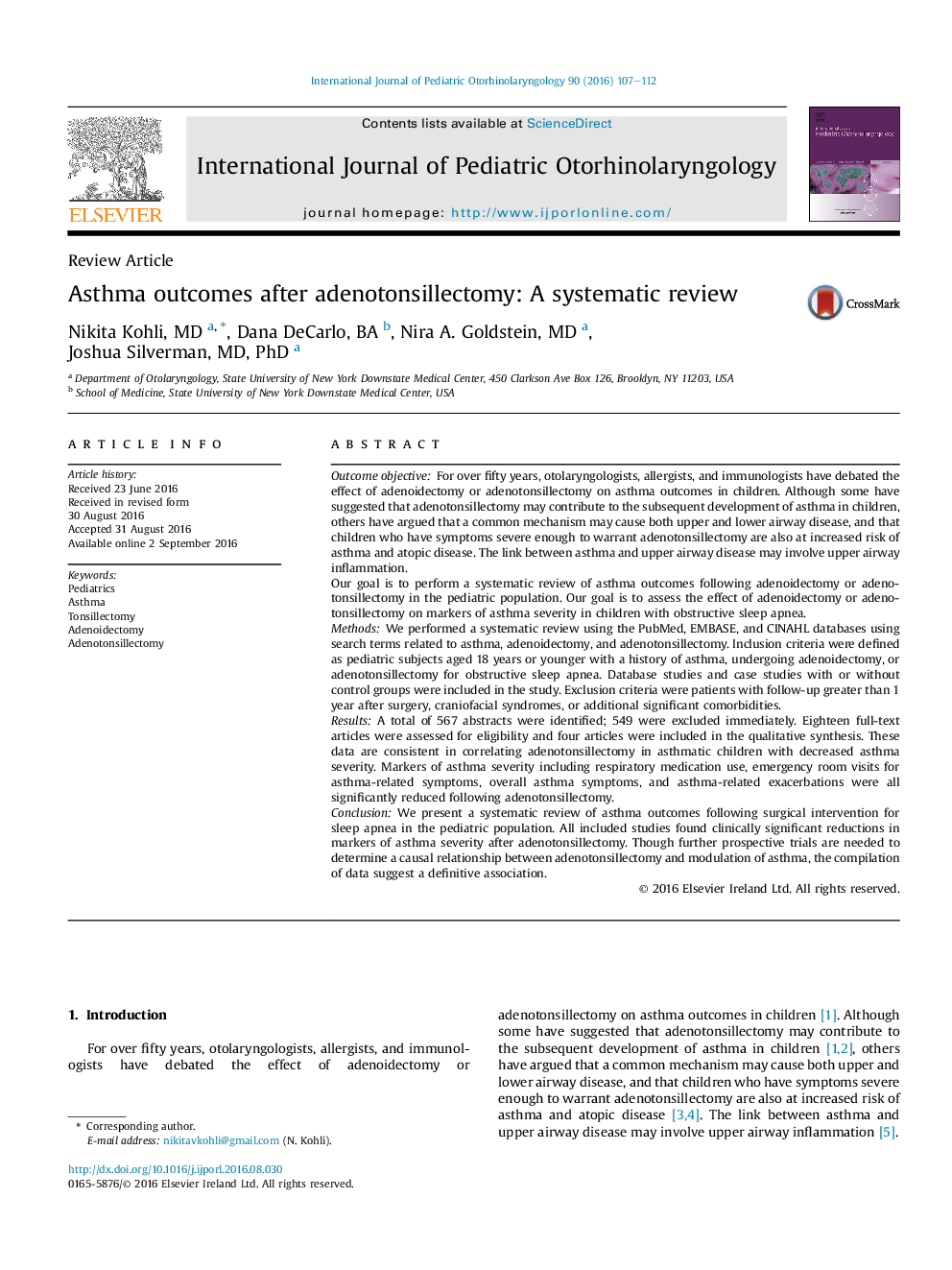| Article ID | Journal | Published Year | Pages | File Type |
|---|---|---|---|---|
| 6212984 | International Journal of Pediatric Otorhinolaryngology | 2016 | 6 Pages |
Outcome objectiveFor over fifty years, otolaryngologists, allergists, and immunologists have debated the effect of adenoidectomy or adenotonsillectomy on asthma outcomes in children. Although some have suggested that adenotonsillectomy may contribute to the subsequent development of asthma in children, others have argued that a common mechanism may cause both upper and lower airway disease, and that children who have symptoms severe enough to warrant adenotonsillectomy are also at increased risk of asthma and atopic disease. The link between asthma and upper airway disease may involve upper airway inflammation.Our goal is to perform a systematic review of asthma outcomes following adenoidectomy or adenotonsillectomy in the pediatric population. Our goal is to assess the effect of adenoidectomy or adenotonsillectomy on markers of asthma severity in children with obstructive sleep apnea.MethodsWe performed a systematic review using the PubMed, EMBASE, and CINAHL databases using search terms related to asthma, adenoidectomy, and adenotonsillectomy. Inclusion criteria were defined as pediatric subjects aged 18 years or younger with a history of asthma, undergoing adenoidectomy, or adenotonsillectomy for obstructive sleep apnea. Database studies and case studies with or without control groups were included in the study. Exclusion criteria were patients with follow-up greater than 1 year after surgery, craniofacial syndromes, or additional significant comorbidities.ResultsA total of 567 abstracts were identified; 549 were excluded immediately. Eighteen full-text articles were assessed for eligibility and four articles were included in the qualitative synthesis. These data are consistent in correlating adenotonsillectomy in asthmatic children with decreased asthma severity. Markers of asthma severity including respiratory medication use, emergency room visits for asthma-related symptoms, overall asthma symptoms, and asthma-related exacerbations were all significantly reduced following adenotonsillectomy.ConclusionWe present a systematic review of asthma outcomes following surgical intervention for sleep apnea in the pediatric population. All included studies found clinically significant reductions in markers of asthma severity after adenotonsillectomy. Though further prospective trials are needed to determine a causal relationship between adenotonsillectomy and modulation of asthma, the compilation of data suggest a definitive association.
